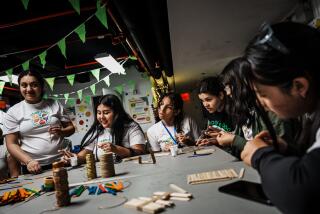Hundreds of migrant children have been sent to New York. Here’s how they spend their days
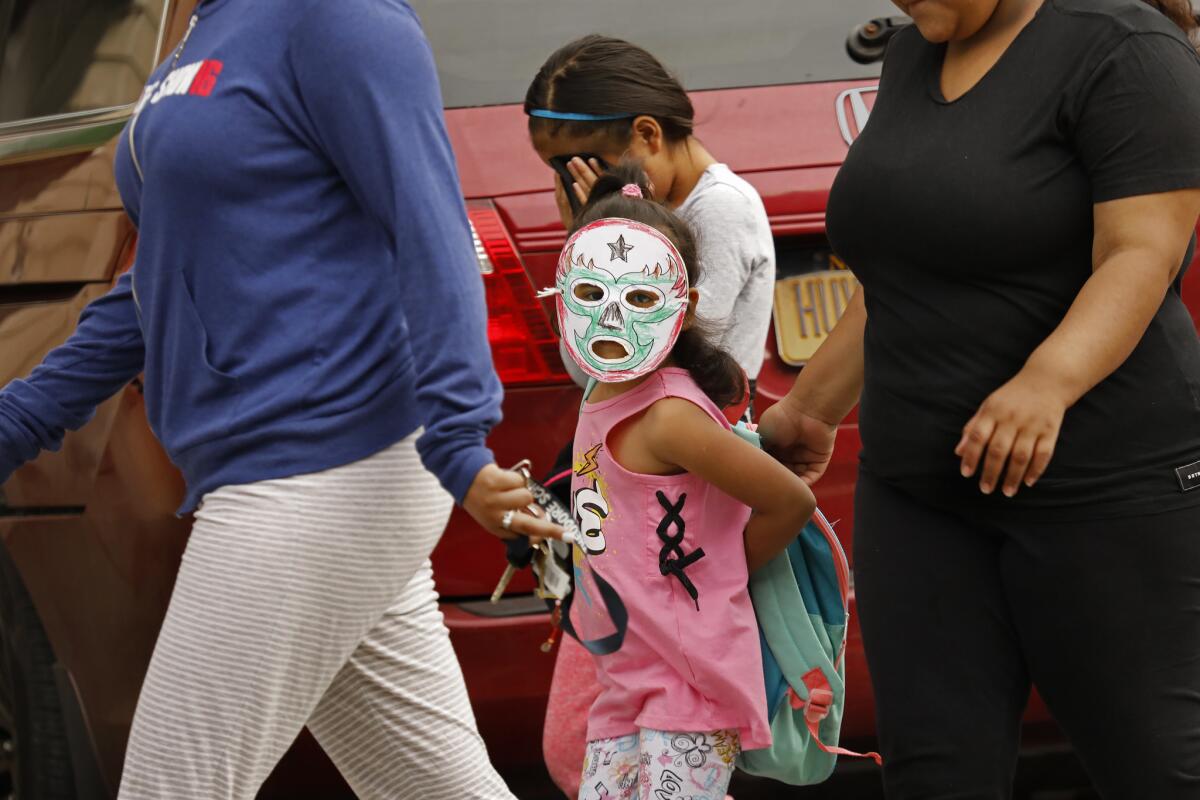
Reporting from New York — By 7:30 a.m. most weekday mornings, hundreds of children driven in unmarked cars and vans from foster homes across New York City start to arrive at the hulking yellow-brick building in East Harlem.
The latest stop on a journey that took them from Central America to the United States now sends them past a police barricade and rumbling commuter trains into the six-story building, where a large poster of the Statue of Liberty beckons them up a shabby staircase.
Inside classrooms they take English lessons, watch movies and struggle to understand attorneys trying to reunite them with parents who have been deported or remain in immigration detention facilities thousands of miles away.
By evening, the children are back with their guardians, often Dominican or Puerto Rican foster parents. They speak Spanish and take the children to parks and on long train and subway rides on weekends.
It’s all part of an effort by families, community members and public officials in this immigrant-friendly city to provide a day-to-day semblance of normality in a situation that’s hardly normal and is filled with emotional triggers.
“What the children battle with the most is seeing other kids with their families,” said Natalie Moss, a 22-year-old foster mom who takes care of two children recently separated from their parents.
“They cry, but you just have to give them more love and attention,” said Moss, who likes to brush girls’ hair to soothe them.
The Trump administration has stopped separating children from their parents at the border, but the ordeal of separation continues to play out across the country, perhaps no place more so than in New York City and its suburbs, where at least 350 to 600 children have been sent, according to estimates by city and consular officials.
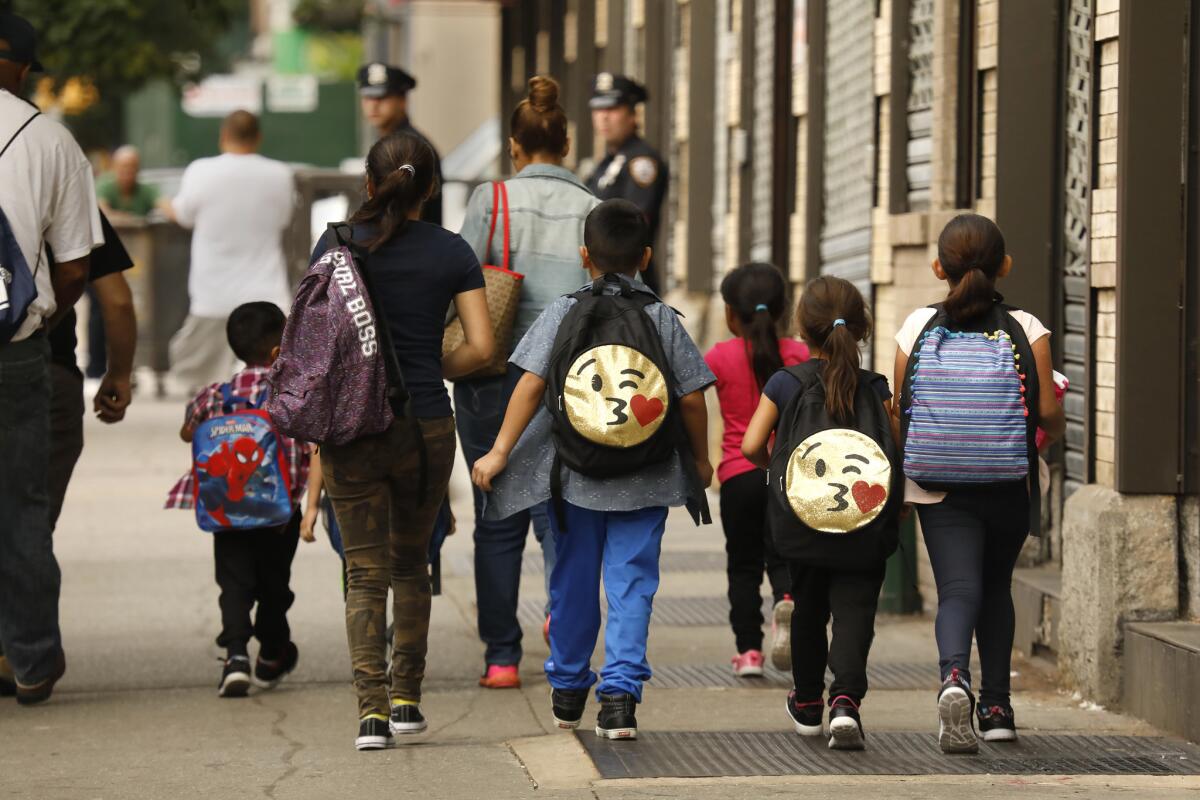
Their presence has stirred passions by turns angry and benevolent, as rage against the policy is matched with outpourings of support for the children.
Few even knew they were here until two weeks ago, when a local television station aired footage of children arriving at the center in the middle of the night.
Within days, the facility run by Cayuga Centers, a nonprofit organization that has long provided day services for migrant children, became the focus of politicians and community members. They demanded tours of the facility and held protests outside the building near the corner of Park Avenue and 131st Street.
“We had no idea that the kids were in the building,” said George Damalas, chief of staff for Democratic state Sen. Jose M. Serrano, whose office is on the second floor of the former industrial building, where a sign outside offers “Quality offices, work lofts and storage.”
“We’re in a relatively quiet residential neighborhood. There aren’t many stores and isn’t much foot traffic,” Damalas said. “Now tons of people are in and out of this building.”
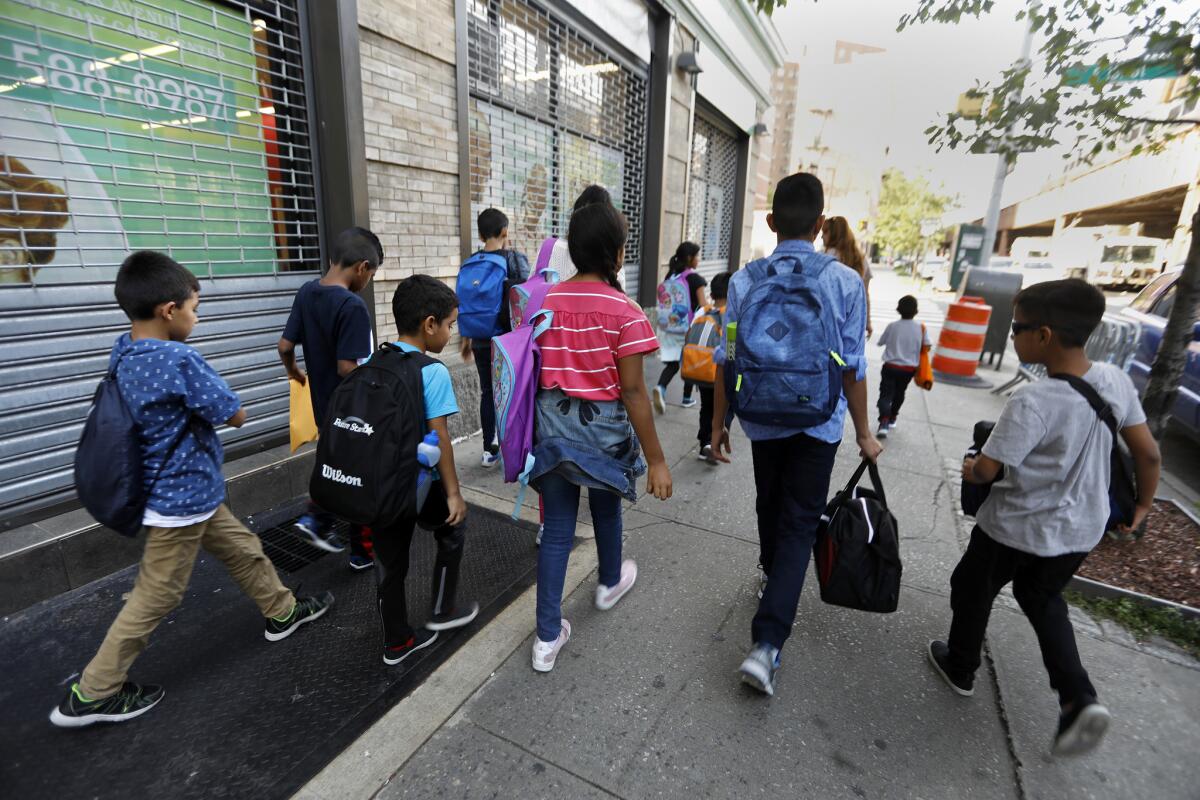
Politicians, including Mayor Bill de Blasio, have come to decry the policy. Protesters wave signs reading, “We are disgusted and appalled.” Other visitors include teachers, therapists, guardians, attorneys, consular officials and social workers — many of them funded by charities and local and state governments.
But their efforts are often not enough to overcome the chaos and poor planning of a separation policy recently denounced by U.S. District Judge Dana Sabraw as lacking any “effective system or procedure.”
In New York, that means city officials have limited contact with the federal Department of Health and Human Services Office of Refugee Resettlement, which is charged with reunifying families.
“There’s no responsiveness or transparency to what they’re doing to ensure reunification,” said Bitta Mostofi, New York City’s commissioner of immigrant affairs
Health and Human Services officials declined a request for comment.
New York was probably chosen as a destination for children because of its existing infrastructure for migrant short-term foster care, public officials and migrant advocates said. The Cayuga Centers site is one of several shelters operating in the area.
The effort to provide stability is built around routine. The children spend hours in classroom-like settings, where they receive lessons, take naps in dimly lit rooms with soft music, and create arts and crafts that they give away.
“Siempre hay un camino de esperanza” — there is always a path of hope — reads one poster by the children that hangs at the Guatemalan consulate.
Many children appear content and well-cared-for, say several government and consular officials who have visited the center, but some who have arrived on flights from immigration detention facilities have health issues, including lice infestations. About a dozen suffering from emotional trauma have been treated by child psychiatrists at area hospitals.
The surge has put a strain on the Cayuga Center, which an estimated 350 children have passed through in recent weeks. The youngest was 9 months old. The center’s executive director, Edward Myers Hayes, did not return calls seeking comment.
Some people have criticized staff as being too restrictive. The children are rarely outdoors though there are several parks in the area. That policy could be meant to protect the privacy of the children, who at times have had their faces covered with Halloween masks as they walk under the media glare.
“They lock them up all day,” said Ronald Lewis, 69, a patient of the adult day-care center on the first floor of the building. “They can’t go where they want.”
Some shelter staff members have quit their jobs, and one leaked video footage of a weeping child. Hector Aparicio, a 31-year-old former U.S. Marine, said his wife, a childcare worker, quit after only five months because she felt overwhelmed.
“The kids are constantly crying. They want to go back to their mom and dads … and my wife said it was getting to her,” said Aparicio, who was interviewed outside the center.
The shelter at times functions as a makeshift legal services center. Attorneys from Catholic Charities who represent the children in their reunification efforts sit in small chairs and gather toys — part of their effort to build trust with clients who are often too young or confused to understand their rights.
“We do whatever we can to make the child feel comfortable,” said Anthony Enriquez, director of the Unaccompanied Minors Program at Catholic Charities in New York. “That may mean going to the floor, playing a game, coloring a drawing.”
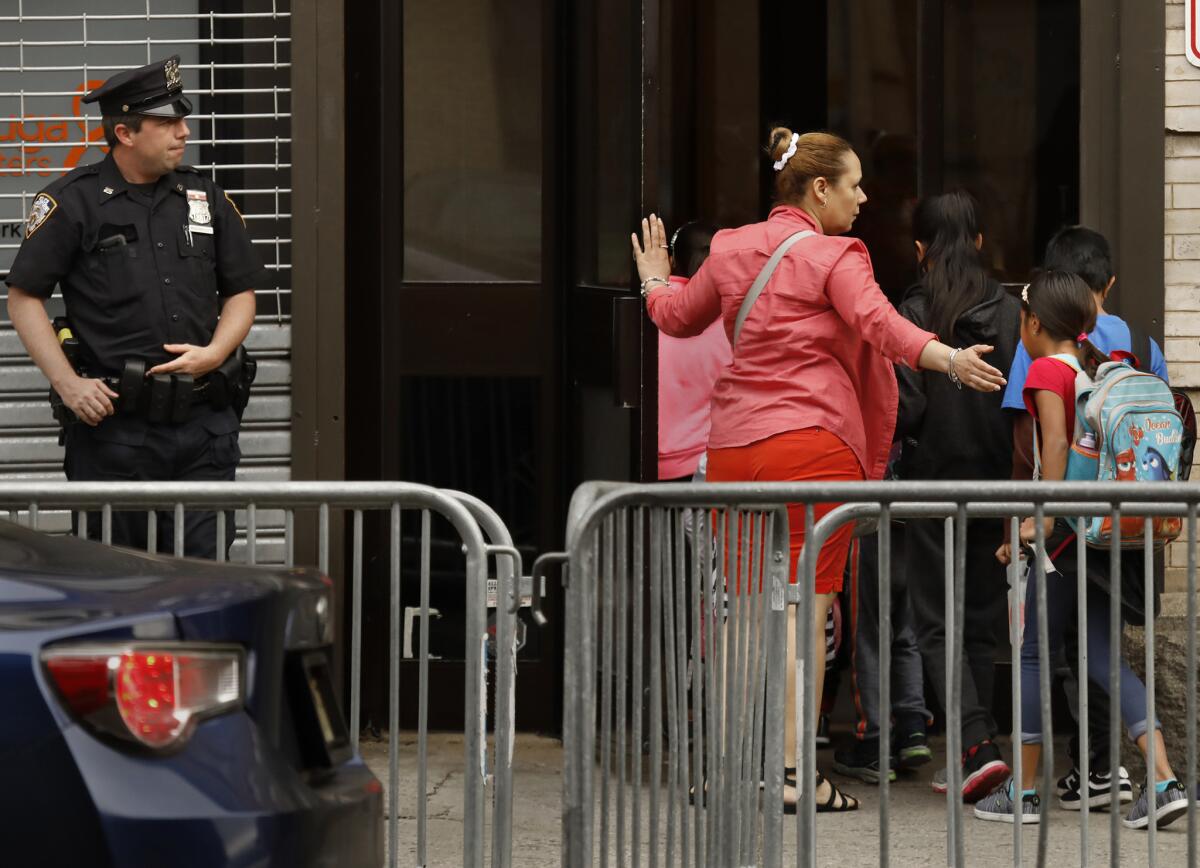
It’s at the immigration court in downtown Manhattan where the sad reality of the children’s situation sinks in.
On one recent afternoon, government and Catholic Charities attorneys struggled at times to provide an immigration judge crucial information needed to start the reunification process.
Though Judge Randa Zagzoug approved “voluntary departures” for a couple children, several other cases were stalled because the Department of Health and Human Services had yet to provide addresses or paperwork with proof of relationships. In one case, guardians contracted by the department even failed to bring the child to court.
While the hearings went on for hours, children waited silently in the stuffy courtroom. One sat in the attorney’s chair, his feet dangling off the ground. Another boy chewed on his fingernails. A sleepy-eyed girl stared at a mother cradling a toddler on her lap.
It’s unclear how many reunifications have taken place. Officials at the Guatemalan Consulate said they were aware of five.
For now, the children spend their nights in apartments in Harlem and the Bronx and as far away as Yonkers. While foster parents in New York have long housed unaccompanied migrant children, the recent arrivals, because they have been forcibly separated from their parents, are more dependent.
Any reminder of home helps. Seasoning food with chili peppers is popular, said one foster mom, an elderly Puerto Rican woman who cares for four children ranging in age from 5 to 14. They are from Guatemala, El Salvador and Honduras, she said.
The foster mom, who declined to give her name, said it is often left for the children to comfort themselves, especially before going to bed.
“That’s when they kneel and say their prayers,” she said. “It’s a custom they bring from their home countries.”
Twitter: @richmarosi
More to Read
Sign up for Essential California
The most important California stories and recommendations in your inbox every morning.
You may occasionally receive promotional content from the Los Angeles Times.

